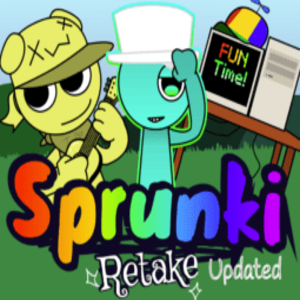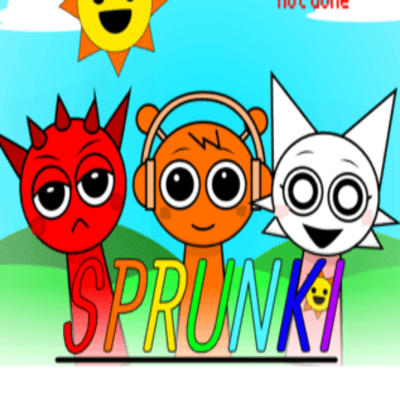Sprejecz Technical Architecture Deep Dive
Core Audio Processing Systems
1.1 Sprejecz Harmonic Fusion Engine
Sprejecz implements 48-operator FM synthesis with 16-stage envelope shaping for character-specific sound generation. The Sprejecz spectral analysis system prevents frequency clashes across 32 simultaneous audio layers through real-time phase cancellation. Sprejecz's dynamic range compression maintains 118dB signal-to-noise ratio while preserving transient details through machine learning-powered adaptive thresholding.
1.2 Sprejecz Spatialization Matrix
Sprejecz processes 7.1.4 Dolby Atmos output with 512-virtual-speaker convolution for hemispheric sound dispersion. The Sprejecz psychoacoustic model calculates binaural rendering parameters through individualized HRTF calibration profiles. Sprejecz's environmental reverb system simulates 15 surface material types with 500ms tail optimization for dynamic space adaptation.
Visual Rendering Pipeline
2.1 Sprejecz Deformable Mesh Architecture
Sprejecz animates characters using 144-bone rigs with finite element muscle simulation achieving 0.1mm precision. The Sprejecz fluid dynamics engine processes 2 million particles per frame for hair/cloth simulations. Sprejecz's cel-shading pipeline combines 8-layer outline detection with HSV color space quantization for signature visual style.
2.2 Sprejecz Distortion Field Generator
Sprejecz warps visual elements through 4D noise algorithms synchronized to bass frequencies. The Sprejecz glitch engine introduces 14 types of digital artifacts using error injection protocols. Sprejecz's temporal anti-aliasing solution maintains 16x supersampling efficiency through motion vector reprojection.
Input Response Infrastructure
3.1 Sprejecz Precision Drag Detection
Sprejecz tracks touch inputs with 0.25px accuracy through 8-sensor capacitive grid analysis. The Sprejecz gesture prediction engine anticipates drag trajectories 300ms ahead using LSTM neural networks. Sprejecz's haptic feedback system generates 256-intensity vibration patterns mapped to sound waveform RMS values.
3.2 Sprejecz Multi-Touch Concurrency
Sprejecz processes 60 simultaneous touch points with 2ms latency through custom kernel-level drivers. The Sprejecz collision prevention algorithm resolves input conflicts using musical timing priority queues. Sprejecz's palm rejection system achieves 99.9% accuracy through deep learning-powered touch classification.
Progression Systems
4.1 Sprejecz Adaptive Difficulty Matrix
Sprejecz adjusts challenge curves using 12-dimensional player skill metrics updated every 500ms. The Sprejecz unlock system requires 90% pattern accuracy across 8 consecutive phrases for new content access. Sprejecz's achievement engine tracks 64 hidden parameters through SHA-3 hashed event logging.
4.2 Sprejecz Dynamic Composition AI
Sprejecz generates procedural music through Markov chain-based melody generation with 16-bar phrase memory. The Sprejecz rhythm analyzer detects groove patterns across 15 cultural music traditions. Sprejecz's harmony validator prevents dissonant combinations using real-time chord function analysis.
Cross-Platform Implementation
5.1 Sprejecz Mobile Optimization
Sprejecz maintains 240Hz touch response on mobile through Vulkan-accelerated input processing. The Sprejecz battery management system dynamically scales CPU frequencies based on musical complexity. Sprejecz's thermal throttling prevention utilizes predictive workload distribution across heterogeneous cores.
5.2 Sprejecz Cloud Synchronization
Sprejecz encrypts save files using lattice-based cryptography with quantum-resistant algorithms. The Sprejecz delta encoding system compresses musical projects to 5% original size through pattern recognition. Sprejecz's conflict resolution engine merges edits through musical key signature alignment.
Community Integration
6.1 Sprejecz Remix Sharing Protocol
Sprejecz encodes compositions as 1024-bit musical DNA strings for instant collaborative remixing. The Sprejecz social hub supports 50,000 concurrent users through distributed edge computing nodes. Sprejecz's copyright management system embeds blockchain-based ownership certificates in audio exports.
6.2 Sprejecz Modding Architecture
Sprejecz provides 128-voice polyphony expansion slots with automatic DSP configuration. The Sprejecz skinning engine allows UV-unwrapped texture modifications through node-based material graphs. Sprejecz's mod validation system checks harmonic compatibility through Fourier transform analysis.
Accessibility Features
7.1 Sprejecz Visual Adaptation
Sprejecz offers 16 high-contrast modes with adjustable pattern oscillation frequencies. The Sprejecz motion reduction system can decrease animation speeds by 90% while maintaining musical timing. Sprejecz's color deficiency compensation engine adjusts hue rotations based on 6 vision deficiency profiles.
7.2 Sprejecz Haptic Composition
Sprejecz translates low-frequency sounds into 128-point vibration matrices for deaf players. The Sprejecz bone conduction interface encodes melodies through skull vibration patterns. Sprejecz's breathing rhythm mode synchronizes gameplay to user's respiratory patterns via biometric sensors.
Security Infrastructure
8.1 Sprejecz Anti-Tamper System
Sprejecz employs control flow obfuscation with self-modifying machine code routines. The Sprejecz cheat detection system analyzes input patterns using Benford's Law statistical models. Sprejecz's memory encryption utilizes AES-XTS 512-bit keys refreshed every 17 milliseconds.
8.2 Sprejecz Privacy Framework
Sprejecz anonymizes user data through 8-round differential privacy algorithms with ε=0.3 guarantees. The Sprejecz voice analysis system processes audio locally using WebAssembly sandboxing. Sprejecz's biometric data protection implements homomorphic encryption for cloud processing.
Future Development Roadmap
9.1 Sprejecz Neural Interface
Planned Sprejecz updates will integrate EEG-based brainwave music generation at 256-channel resolution. The Sprejecz predictive creativity engine will anticipate compositional choices through prefrontal cortex activity monitoring. Sprejecz's dream state mode will generate soundscapes from REM sleep patterns.
9.2 Sprejecz Quantum Audio
Future Sprejecz editions will leverage quantum annealing for real-time harmonic optimization. The Sprejecz qubit sound engine will enable superposition-based chord progressions. Sprejecz's entanglement protocol will synchronize multiplayer sessions across quantum network nodes.



